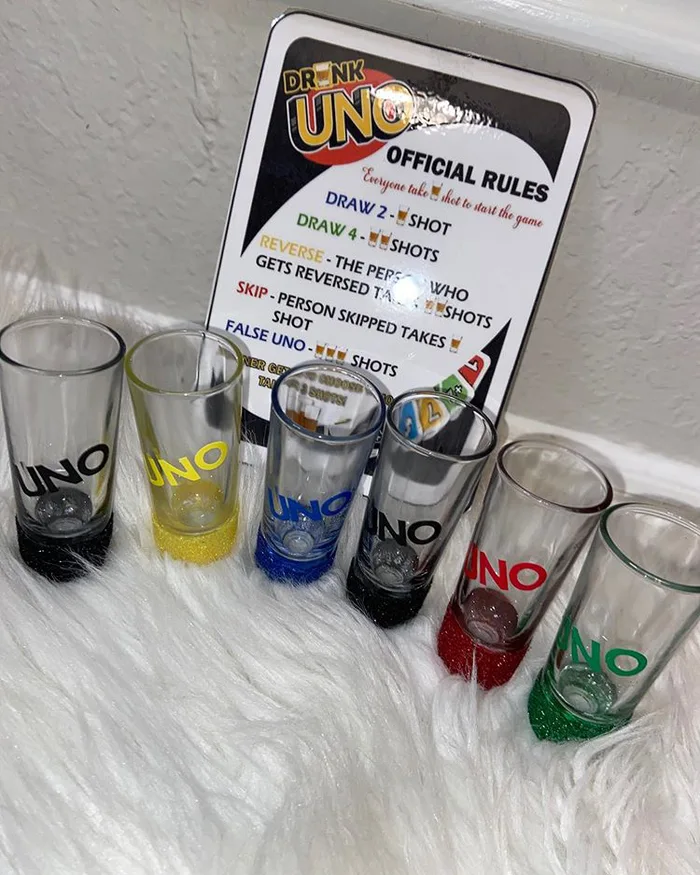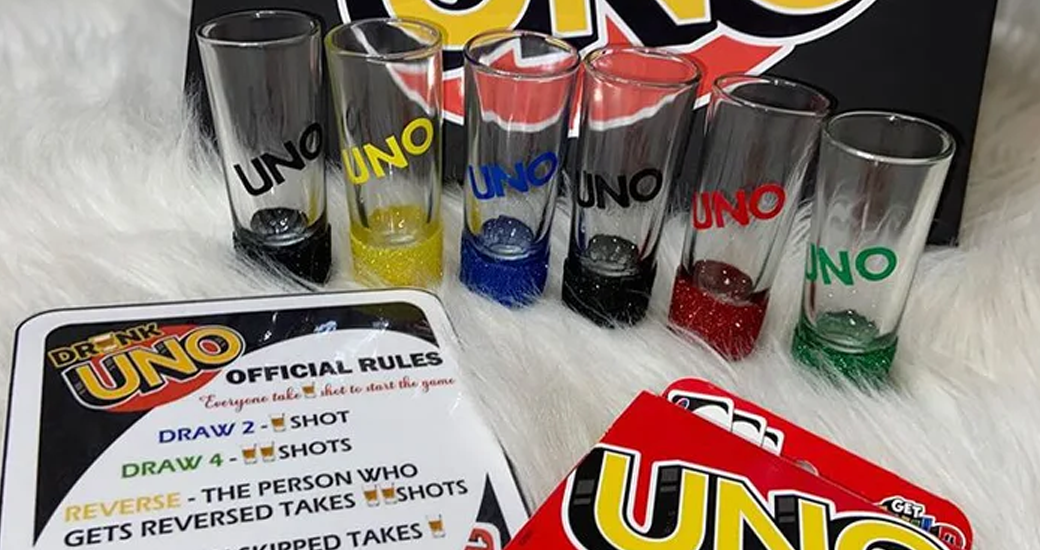Drinking Uno
It doesn’t take much to play Uno The Drinking Game. All you need are: #1. Alcohol of Choice #4. How to Play Uno the Drinking Game: Variations That’s why you’re playing Uno The Drinking Game, silly. (Amazon Link.) Next up is the Drinking Game Uno Gameplay Variations, and there are a lot of them. The Drunk UNO Game comes with 4 shot glasses that you can fill with your favorite liquor. It could be vodka, rum, tequila, gin, whiskey, brandy, or whatever spirit you desire. Additionally, it includes a printed rule sheet specifying the number of shots for particular action cards.
Water is at the core of sustainable development and is critical for socio-economic development, energy and food production, healthy ecosystems and for human survival itself. Water is also at the heart of adaptation to climate change, serving as the crucial link between society and the environment.
UNO as a Drinking Game. Even more fun with booze! Fuck the Dealer. The name says it all. The dealer gets the shit end of the stick. Blowing Cards 💨 Blowing until the drunkness hits. Here you blow to win. Fuck you Pyramide. The person with the steadiest hand will serve a lot of 🍺 to the others. Granted, many veteran UNO players have long played a boozy version of the classic game, but now, the makers of UNO have created an official version of Dunk UNO, complete with its own freakin’ set of shot glasses (cue fangirl moment). Here’s how the game is played: If you get hit with a “Draw 2” card, you have to take a shot.
Water is also a rights issue. As the global population grows, there is an increasing need to balance all of the competing commercial demands on water resources so that communities have enough for their needs. In particular, women and girls must have access to clean, private sanitation facilities to manage menstruation and maternity in dignity and safety.
At the human level, water cannot be seen in isolation from sanitation. Together, they are vital for reducing the global burden of disease and improving the health, education and economic productivity of populations.
Water-related challenges
- 2.2 billion people lack access to safely managed drinking water services. (WHO/UNICEF 2019)
- Over half of the global population or 4.2 billion people lack safely managed sanitation services. (WHO/UNICEF 2019)
- 297,000 children under five die every year from diarrhoeal diseases due to poor sanitation, poor hygiene, or unsafe drinking water. (WHO/UNICEF 2019)
- 2 billion people live in countries experiencing high water stress. (UN 2019)
- 90 per cent of natural disasters are weather-related, including floods and droughts. (UNISDR)
- 80 per cent of wastewater flows back into the ecosystem without being treated or reused. (UNESCO, 2017)
- Around two-thirds of the world’s transboundary rivers do not have a cooperative management framework. (SIWI)
- Agriculture accounts for 70 per cent of global water withdrawal. (FAO)
- Roughly 75 per cent of all industrial water withdrawals are used for energy production. (UNESCO, 2014)
The right to water
One of the most important recent milestones has been the recognition in July 2010 by the United Nations General Assembly of the human right to water and sanitation. The Assembly recognized the right of every human being to have access to enough water for personal and domestic uses, meaning between 50 and 100 litres of water per person per day. The water must be safe, acceptable and affordable. The water costs should not exceed 3 per cent of household income. Moreover, the water source has to be within 1,000 metres of the home and collection time should not exceed 30 minutes.
Water and the Sustainable Development Goals
Sustainable Development Goal (SDG) 6 is to “Ensure availability and sustainable management of water and sanitation for all”. The targets cover all aspects of both the water cycle and sanitation systems, and their achievement is designed to contribute to progress across a range of other SDGs, most notably on health, education, economics and the environment.
The UN and Water
The United Nations has long been addressing the global crisis caused by insufficient water supply to satisfy basic human needs and growing demands on the world’s water resources to meet human, commercial and agricultural needs.
The United Nations Water Conference (1977), the International Drinking Water Supply and Sanitation Decade (1981-1990), the International Conference on Water and the Environment (1992) and the Earth Summit (1992) — all focused on this vital resource.
The ‘Water for Life’ International Decade for Action 2005-2015 helped around 1.3 billion people in developing countries gain access to safe drinking water and drove progress on sanitation as part of the effort to meet the Millennium Development Goals.


Recent milestone agreements include the 2030 Agenda for Sustainable Development, the 2015-2030 Sendai Framework for Disaster Risk Reduction, the 2015 Addis Ababa Action Agenda on Financing for Development, and the 2015 Paris Agreement within the UN Convention Framework on Climate Change.
Water, Sanitation and Hygiene
Contaminated water and a lack of basic sanitation are undermining efforts to end extreme poverty and disease in the world’s poorest countries.
In 2017, 2 billion people worldwide did not have access to basic sanitation facilities such as toilets or latrines. 673 million people still practised open defecation. According to the WHO/UNICEF Joint Monitoring Programme for Water Supply and Sanitation, at least 1.2 billion people worldwide are estimated to drink water that is not protected against contamination from faeces. Even more drink water, which is delivered through a system without adequate protection against sanitary hazards.
Unclean water and child mortality
Unclean water and poor sanitation are a leading cause of child mortality. Childhood diarrhoea is closely associated with insufficient water supply, inadequate sanitation, water contaminated with communicable disease agents, and poor hygiene practices. Diarrhoea is estimated to cause 1.5 million child deaths per year, mostly among children under five living in developing countries.
Improved sanitation and economic benefits
The links between lack of water and sanitation access and the development goals are clear, and the solutions to the problem are known and cost-effective. A 2012 WHO study shows that every US $1 invested in improved sanitation translates into an average global economic return of US $5.5. Those benefits are experienced specifically by poor children and in the disadvantaged communities that need them most.
Celebrating water resources
Every year, there are two UN international observances on water and sanitation: World Water Day, 22 March and World Toilet Day, 19 November. Each day is marked by a public campaign which is about raising awareness of the issues, focusing attention on a particular theme, and inspiring action.

The International Decade for Action, ‘Water for Sustainable Development,’ started on World Water Day, 22 March 2018, and will end on World Water Day, 22 March 2028.
The Decade is about accelerating efforts towards meeting water-related challenges, including limited access to safe water and sanitation, increasing pressure on water resources and ecosystems, and an exacerbated risk of droughts and floods.
Resources:
The game of UNO is a family tradition for most people. Often tucked away in dusty boxes and cupboards. It’s a simple game which, when you add in a few drinks can become wicked fun!!
These rules turn a classic card game into a great social drinking game that can be enjoyed by anyone and everyone – just grab some drinks and a deck of UNO cards.
The Drunk UNO Drinking Game is guaranteed to spice up any games night. A free download of the rules & SVG Files to make your own shot glasses can be found – HERE
Equipment
Just a standard pack of UNO cards – If you don’t have any, they can be found on Amazon.
The Setup
Play UNO as you normally would be with these adjusted rules……
The Rules
This Drunk UNO game can be played using shots or alternatively exchange the shots for a sip/gulp of your respective drink.
Start the Game – Each player takes a drink
Draw a 2 – Take a drink
Draw a 4 – Take 2 drinks

If you get reversed – Take 2 drinks
If you get skipped – Take a drink

If you claim False UNO – Take 3 drinks
Winner – Choose an opponent to take 3 drinks.
Free Printable Rules Card
Always Drink Responsibly
Don’t Drink & Drive
Uno As A Drinking Game
These rules are a personal representation and are in no way official rules or affiliated in any way with Mattel Games.